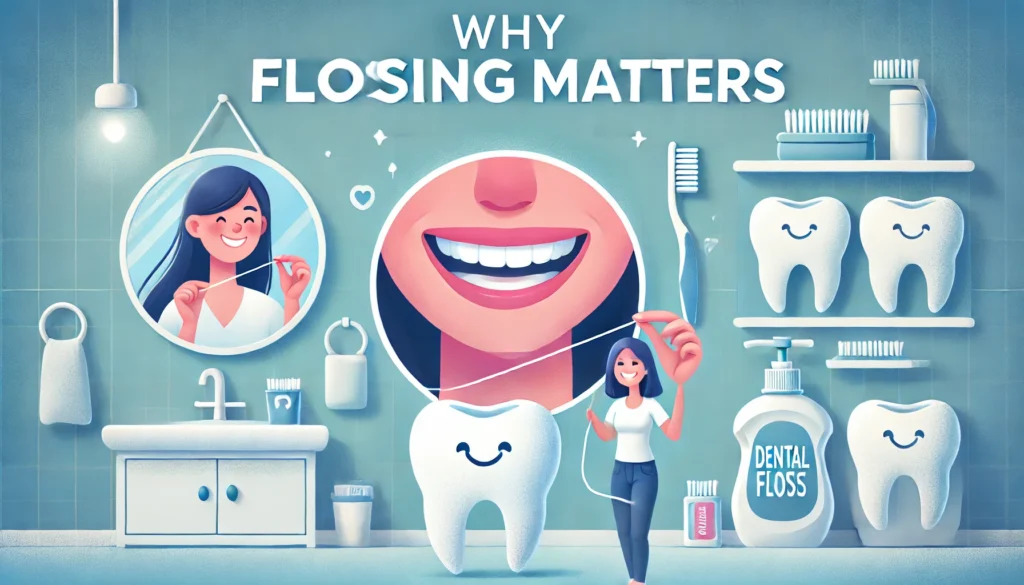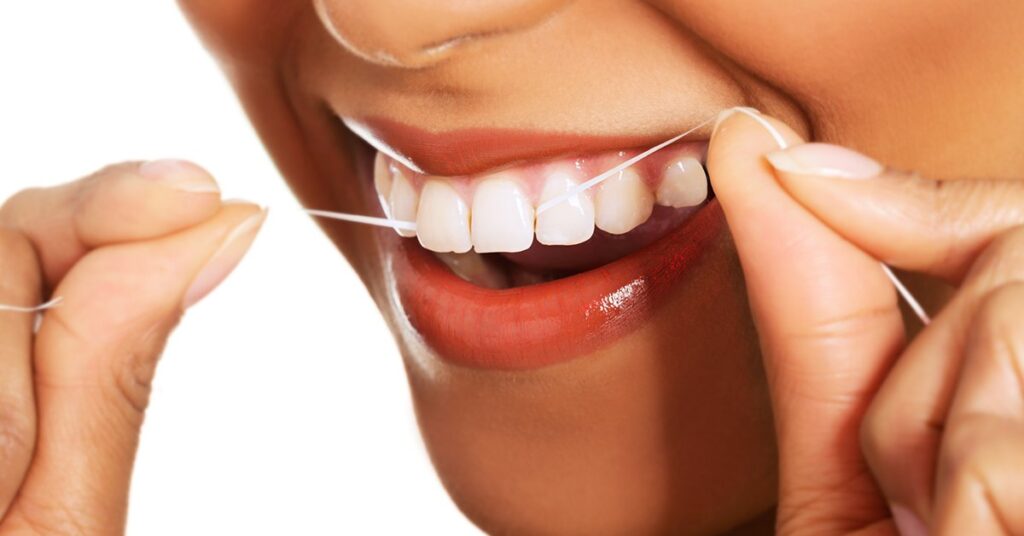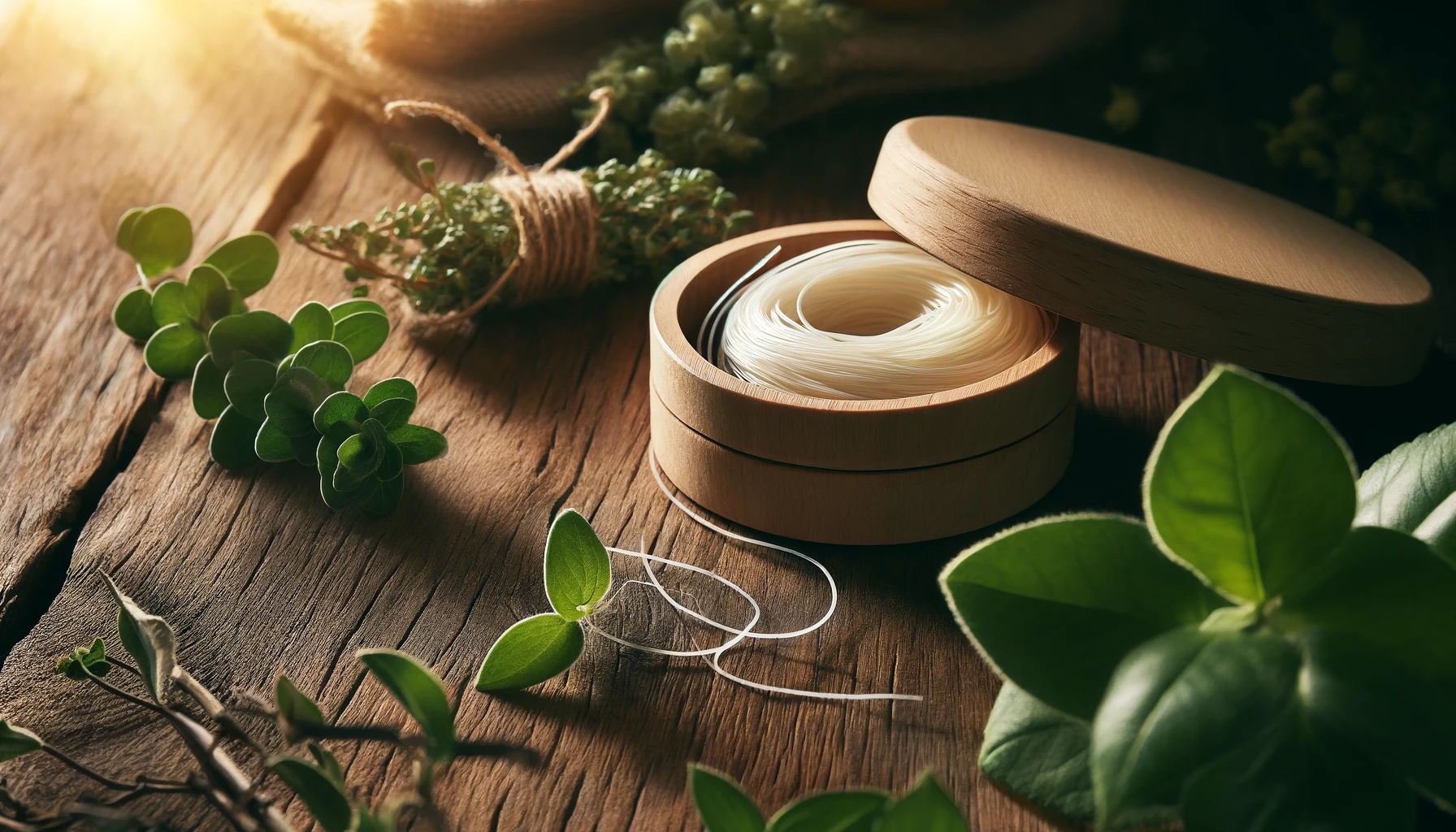Maintaining good oral hygiene is more than just brushing your teeth twice a day. Flossing plays a crucial role in keeping your gums healthy and your smile bright. If you’ve ever struggled with flossing or experienced discomfort, this guide will help you master the technique effortlessly.
Let’s dive into the essentials of flossing and its benefits for your overall dental health.
Why Flossing Matters

Many people underestimate the importance of flossing, but it’s one of the most effective ways to remove plaque and food particles stuck between teeth. Brushing alone cannot reach these tight spaces, which can lead to:
✔ Gum disease and inflammation
✔ Bad breath due to trapped food debris
✔ Increased risk of cavities
✔ Plaque buildup that can harden into tartar
By flossing daily, you significantly reduce these risks and promote healthier gums.
How Flossing Helps Prevent Gum Disease
Gum disease, also known as periodontal disease, occurs when plaque builds up along the gumline and causes inflammation. This can lead to gingivitis (early-stage gum disease) or periodontitis (advanced gum disease), which may result in tooth loss if left untreated. Flossing removes hidden debris, preventing the bacteria from causing infections and ensuring a healthier mouth.
How to Floss Properly
Flossing correctly is essential to get the best results without irritating your gums. Follow these steps for an effective and gentle flossing routine:
Step-by-Step Guide to Flossing
- Choose the Right Floss: Waxed, unwaxed, or dental tape – select what feels comfortable for you.
- Use Enough Floss: Cut about 18 inches of floss and wrap the ends around your middle fingers, leaving about 1-2 inches to work with.
- Be Gentle: Slide the floss between your teeth carefully, avoiding snapping it into your gums.
- Follow a C-Shape: Curve the floss around each tooth and move it up and down to remove plaque.
- Floss Every Tooth: Don’t forget the back teeth, as they are just as prone to plaque buildup.
- Use a Fresh Section: As you move from tooth to tooth, unwind a clean section of floss.
Common Flossing Mistakes to Avoid
Flossing may seem simple, but many people make common mistakes that reduce its effectiveness. Here are a few pitfalls to avoid:
❌ Flossing too hard: Aggressive flossing can damage your gums and cause bleeding.
❌ Skipping certain teeth: Every tooth matters, so ensure you floss all the way to the back.
❌ Reusing the same section of floss: This spreads bacteria instead of removing it.
❌ Not flossing regularly: Flossing only occasionally won’t prevent gum disease.
By practicing proper flossing techniques daily, you can maintain optimal oral health.
Signs of Unhealthy Gums
If you notice any of the following symptoms, it might be time to improve your flossing habits and visit your dentist:
⚠ Bleeding gums when brushing or flossing
⚠ Red, swollen, or tender gums
⚠ Persistent bad breath
⚠ Gum recession, exposing more of the tooth
Catching gum disease early can prevent more serious complications, so always be mindful of these signs.
How Poor Gum Health Affects Overall Well-being
Unhealthy gums don’t just impact your mouth; they can also affect your overall health. Studies have linked gum disease to conditions such as heart disease, diabetes, and respiratory infections. This makes flossing an essential part of maintaining not just oral health but overall well-being.
Flossing Alternatives for Sensitive Gums
If traditional flossing is uncomfortable or difficult, consider these alternatives:
✔ Water Flossers: A gentle way to clean between teeth using a stream of water.
✔ Floss Picks: Pre-threaded floss holders for easy handling.
✔ Interdental Brushes: Tiny brushes designed to clean between teeth effectively.
✔ Soft Picks: Ideal for those with braces or sensitive gums.
These alternatives can make flossing more accessible and less irritating for those with gum sensitivity.
How to Overcome Flossing Discomfort

It’s common to experience mild discomfort when you first start flossing, but it should not be painful. If your gums hurt:
🔹 Use a softer touch to avoid injuring your gums.
🔹 Switch to waxed floss for a smoother experience.
🔹 Rinse with an antiseptic mouthwash to reduce inflammation.
🔹 Stay consistent – the more you floss, the healthier your gums will become.
Myths and Misconceptions About Flossing
There are many misconceptions about flossing that can lead to improper habits. Let’s debunk a few common myths:
Myth #1: If My Gums Bleed, I Should Stop Flossing
Fact: Bleeding gums are often a sign of inflammation caused by plaque buildup. Regular flossing can help improve gum health and reduce bleeding over time.
Myth #2: Brushing Alone is Enough
Fact: A toothbrush cannot reach between teeth where plaque and food particles accumulate. Flossing is necessary for a complete clean.
Myth #3: Flossing is Only Necessary When Food Gets Stuck
Fact: Even if food isn’t visibly stuck, plaque still forms between teeth. Flossing daily helps remove this invisible buildup. By understanding these facts, you can make flossing a non-negotiable part of your routine.
Tips to Make Flossing a Daily Habit
If you struggle with consistency, here are a few tips to integrate flossing into your daily routine: 🕒 Set a Reminder: Add flossing to your morning or bedtime routine.
📱 Use a Flossing App: Track your flossing habits with a dental health app.
🔄 Keep Floss Handy: Store floss in visible places like your bathroom, purse, or car.
💡 Try Different Types of Floss: Experiment with various flossing tools to find what works best for you.
Building the habit may take time, but with consistency, flossing will become second nature.
FAQ’s
1. Is it necessary to floss every day?
Yes! Flossing every day helps remove food and plaque stuck between your teeth. If you don’t floss, plaque can turn into tartar, which can lead to gum disease and cavities.
2. What is the best time to floss – before or after brushing?
It’s best to floss before brushing. Flossing removes hidden debris, allowing your toothpaste to clean your teeth better.
3. What should I do if my gums bleed while flossing?
If your gums bleed, don’t stop flossing! Bleeding gums usually mean they are inflamed due to plaque buildup. Keep flossing gently every day, and the bleeding should stop in a few days.
4. Can I use something other than regular floss?
Yes! If regular floss is hard to use, you can try floss picks, water flossers, or interdental brushes. These can make flossing easier and more comfortable.
5. How long does it take to see results from flossing?
If you floss daily, you should notice healthier gums and fresher breath within one to two weeks. Your gums will stop bleeding, and your mouth will feel cleaner!
Final Thoughts
Flossing is a simple yet powerful habit that protects your gums and teeth from long-term damage. By making it a part of your daily routine, you’ll enjoy a healthier mouth, fresher breath, and a more confident smile. With proper technique, consistency, and the right tools, flossing can be easy and pain-free. So grab that floss and take the first step toward better oral health today!
Related Post
- mylovelyfurryfriend discover expert tips on dog health
- Infectious Diseases Updates – Stay Informed, Stay Protected!
- Wegovy For Weight Loss – A Breakthrough in Managing Obesity!
- Emergency Medicine Forum – A Hub for Fast-Paced Knowledge, Support & Updates!
- Pediatrics Discussions – Insights, Challenges, and Expert Advice for Better Child Health!





Leave a Reply